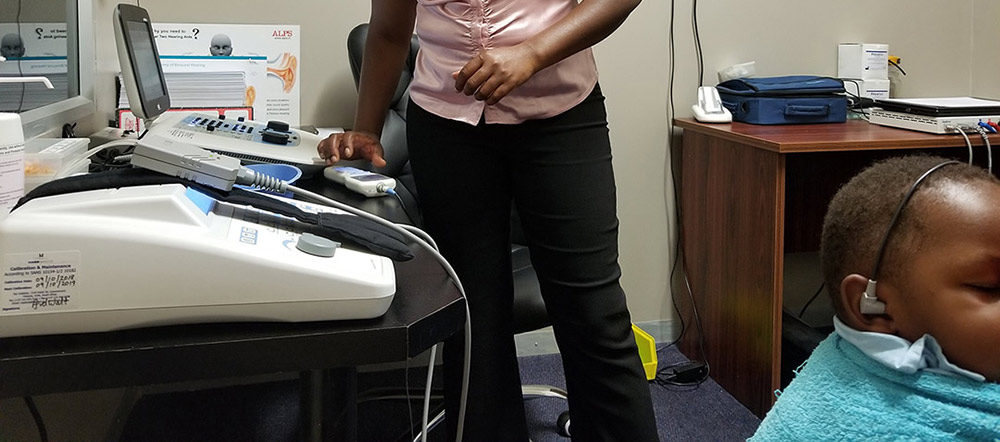New Born Hearing Screening
Newborn screening is carried out before a baby is 1 month old. The tests are simple and painless. It is very important to know if an infant has any hearing loss, because early detection and treatment can mean the difference between normal and delayed development. AudioMax Audiology Centre is the primary New Born Hearing Screening Centre in Zimbabwe. Working hand in glove with Harare Childrens Hospital at Harare Central Hospital, AudioMax seeks to ensure that comprehensive testing of Hearing Loss in Infants is open to all in Zimbabwe.
Key Components in a Diagnostic Audiological Evaluation of Infants and Children are Auditory Brainstem Response (ABR), Auditory Steady State Responses (ASSR), Otoacoustic Emissions (OAE) and Tympanometry
These diagnostic tests must be done as early as possible so that any potential hearing loss can be diagnosed before 3 months of age. A baby identified with a hearing loss should be fitted with hearing aids (if appropriate) and enrolled in an early intervention program well before 6 months of age.
Auditory Steady State Response (ASSR)
This is an objective test used for evaluation of hearing ability in children too young for traditional audiometric testing. Most children are referred for ASSR after a newborn hearing screen in the hospital indicates the possibility of hearing loss. Early intervention strategies, such as hearing devices or cochlear implantation, are necessary for development of speech and language skills in a child with hearing impairment. The results obtained from ASSR testing can be used to estimate the behavioral pure-tone audiogram. This information is essential in the management of children with hearing loss.
The Auditory Brainstem Response (ABR)
Another objective test that can be used to estimate hearing sensitivity and to identify neurological abnormalities of the auditory nerve and the auditory pathway up through the brainstem. The audiologist places electrodes on the child's ear lobes and forehead, ear phones are placed in the ear to deliver the click stimulus. As the clicks are delivered through the earphones, the electrodes measure the electrical activity from the auditory pathway. These electrical responses are analyzed by the computer and produce a waveform. The different peaks on the resulting waveform provide information on the time it takes various structures of the auditory pathway to respond following the stimulus.
Otoacoustic Emissions (OAE’s)
These are low level, inaudible sounds produced by(cochlea). OAE’s can either occur spontaneously or in response to clicks or tones. When the hair cells of the inner ear are stimulated, they respond by sending information to the brain and by sending an “echo” back to the outer ear. This “echo” can be analyzed and recorded. OAE’s are usually present in individuals with a normal functioning cochlea but may be absent if even a mild conductive or cochlear hearing loss exists.
Tympanometry
This is an examination used to test the condition of the middle ear[1] and mobility of the eardrum (tympanic membrane) and the conduction bones by creating variations of air pressure in the ear canal. In short Tympanometry is an objective test of middle-ear function

